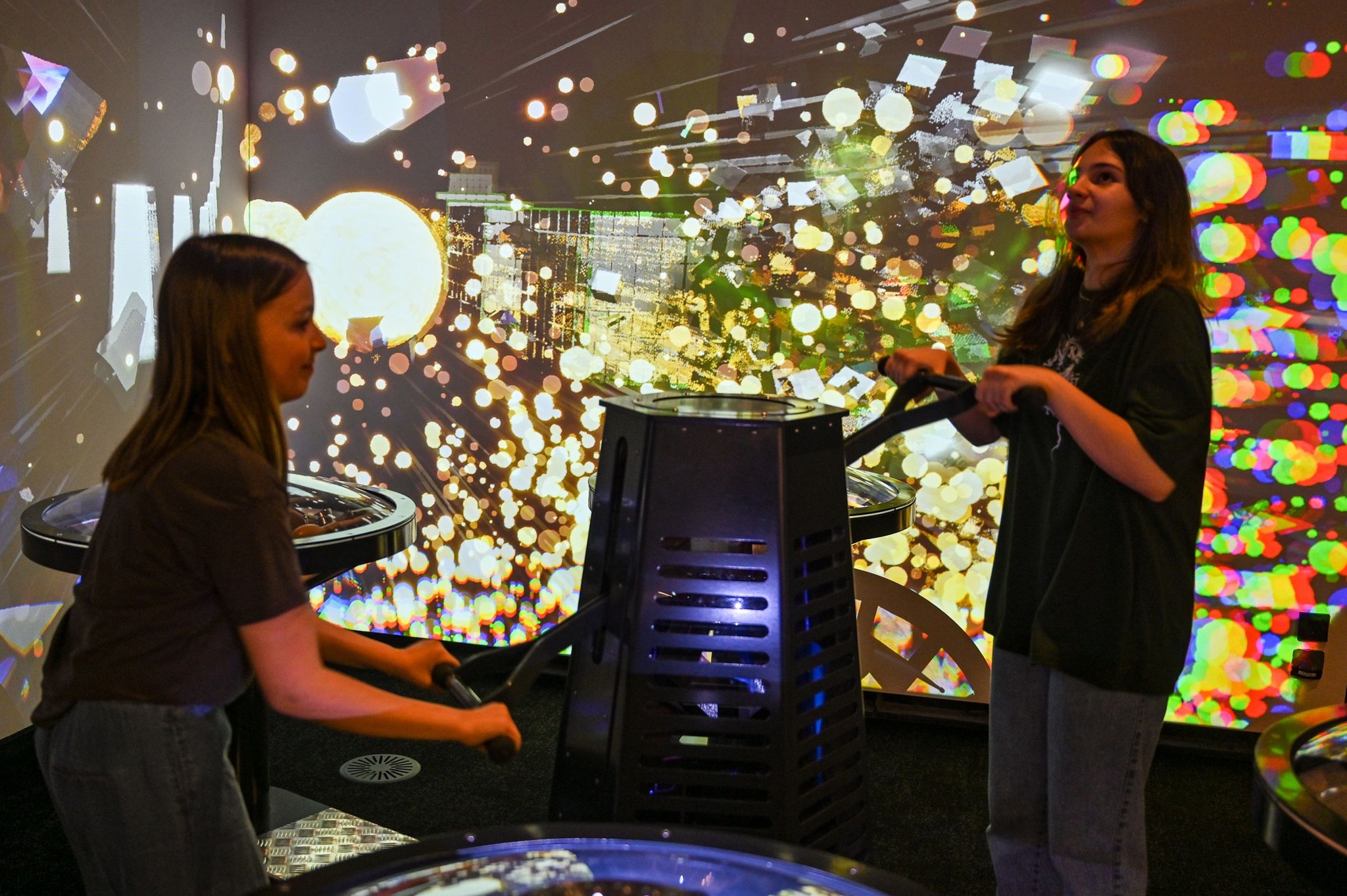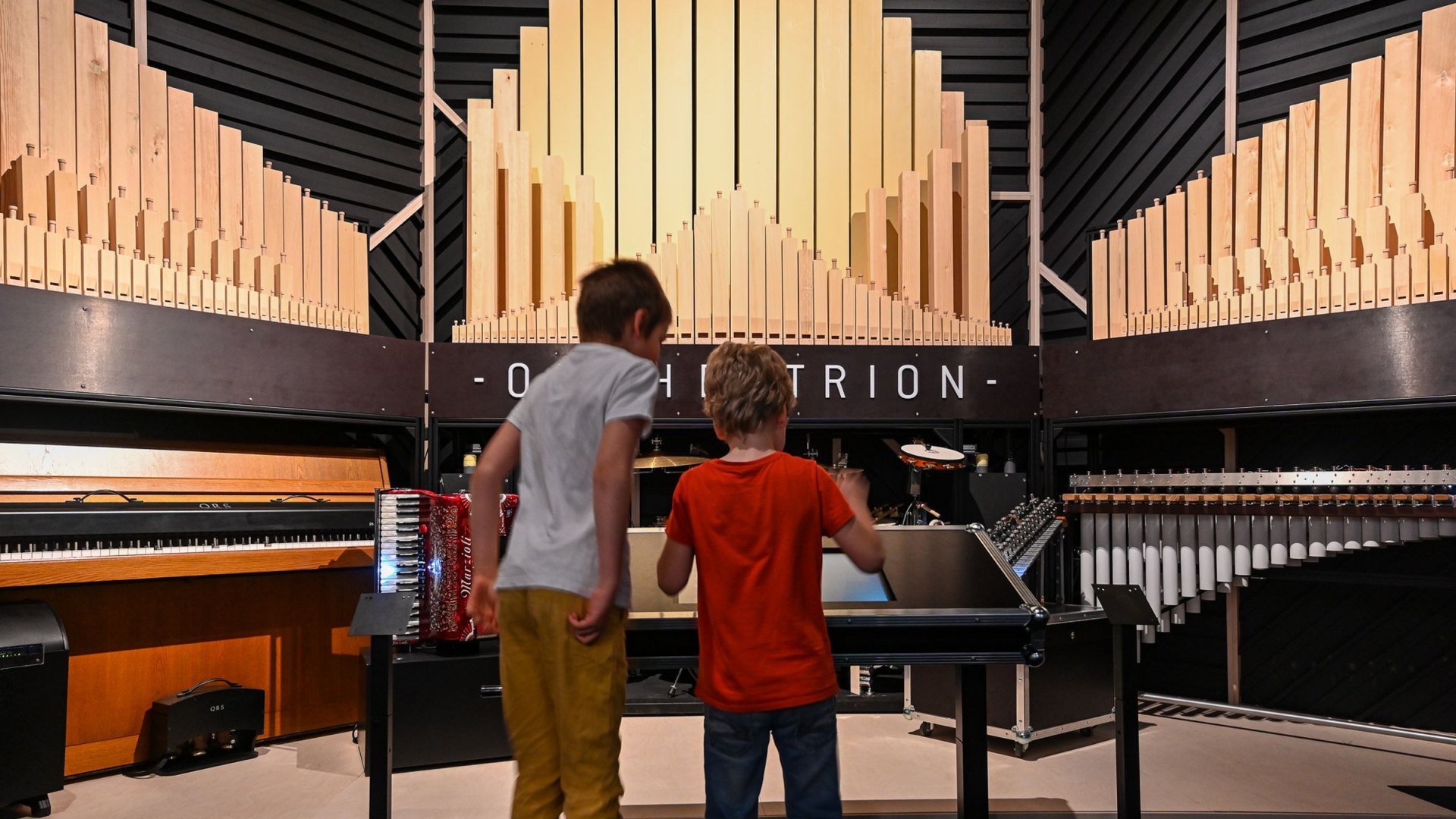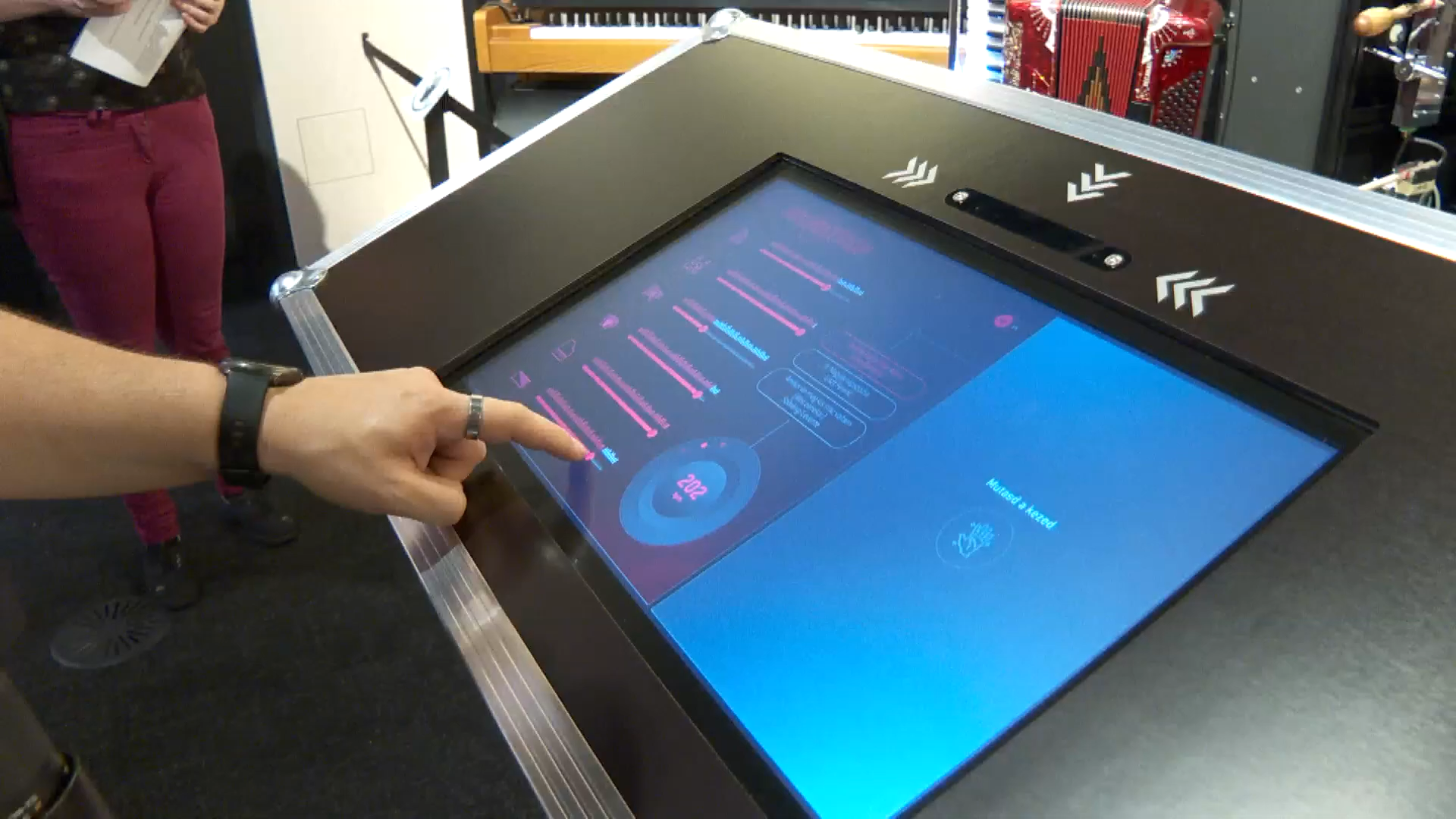Soundbroidery v2.0
The Embroidery Ball, based on the original idea of Daniel Vaczi and our initial prototype from back in 2015, is a real-time audio-visual tool that creates an intuitive intermedial-interdisciplinary relationship between the worlds of sound, images, and numbers. The sounds sung by or played on a MIDI keyboard by the visitor draw colorful lines on a virtual ball. The display is created using a holographic fan, which creates the illusion of the ball appearing in the air, as it is transparent.
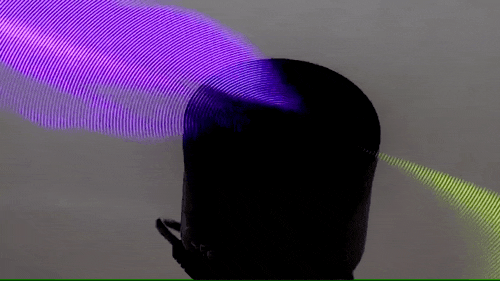
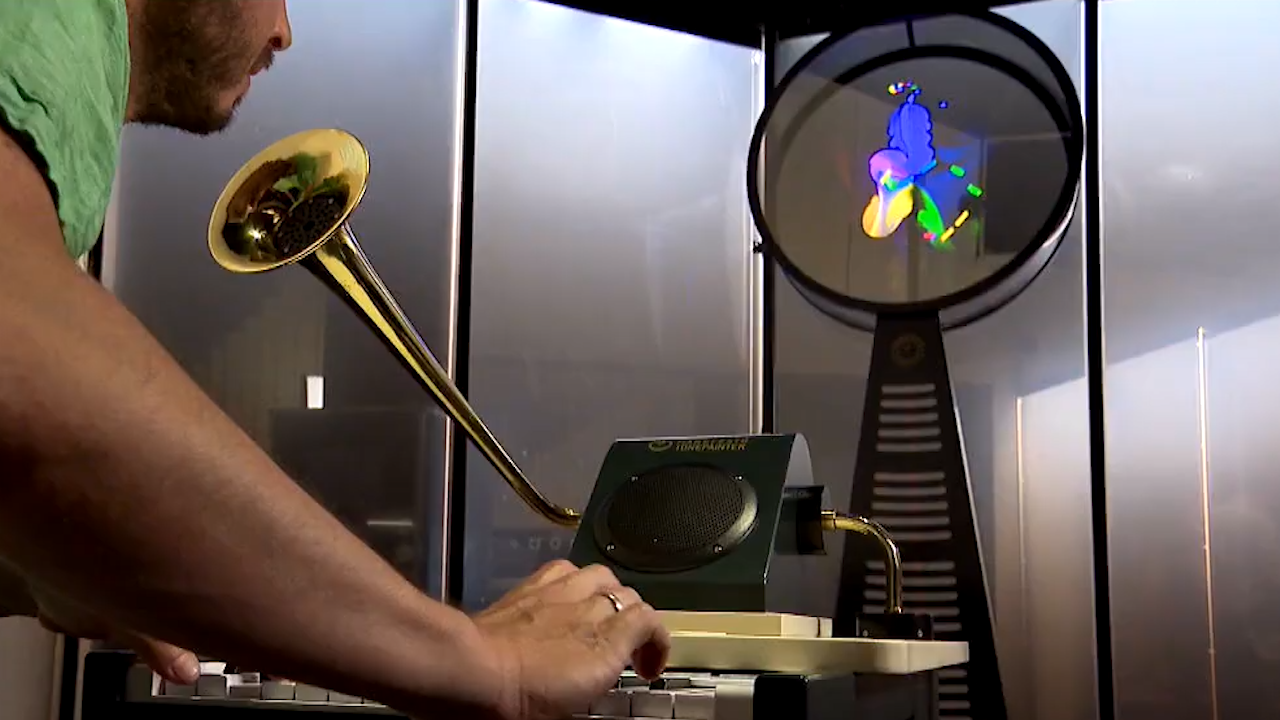
Check the 2015 project here
Rhythm Cart
The installation is an electro-mechanical device that operates like a hand-cranked instrument or a draisine. 2-4 people can crank it from both sides, and the cranking sets a virtual flywheel in motion. This flywheel is connected to four digital rhythm selector dials, which are associated with different rhythm instruments located in the wheels of the installation. Each unit represents a loop, which is a sound-emitting circle. The tempo of the loops is determined by the speed of the cranking, and different instruments can be set to sound at certain points within the circle by turning the buttons on and off. The installation also includes a synchronized projection that displays an algorithmic animation, along with a shape for each instrument played. The installation can be played by up to 6-8 people at once, and even passive listeners can enjoy the experience.
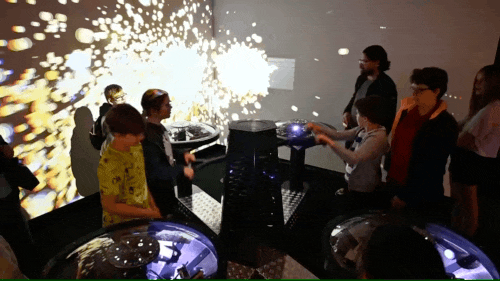
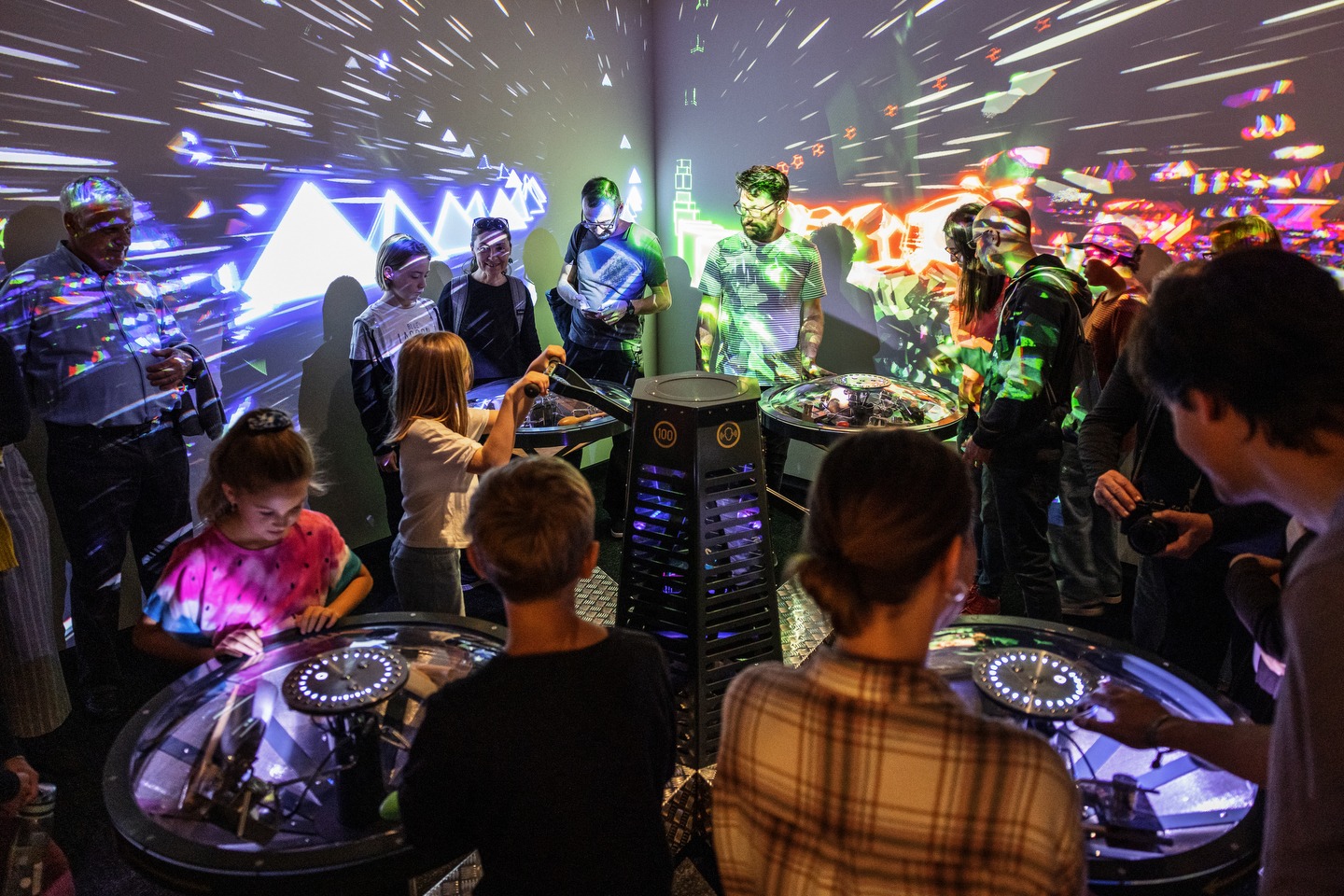
Orchestrion
The Robot Orchestra or Orchestrion is a group of digitally controlled, acoustically sounding music machines consisting of seven planned modules. The modules include organ pipes (4 sets of 5 octaves, including one quarter-tone tuning), a piano, an accordion, a marimba, a glockenspiel, a steel drum, and a drum kit. In addition to playing pre-written and pre-instrumented songs, the Robot Orchestra is also capable of interactive modes of operation.
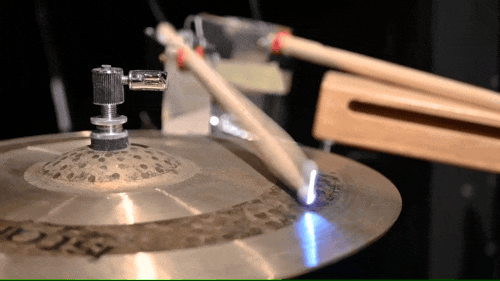
The “Conductor Game” is an interactive mode of operation for the Robot Orchestra, in which the user standing on the conductor’s podium can influence certain parameters of the music. The user’s hand movements are detected with a Leap Motion sensor, allowing them to control the tempo, volume, muting or activating of certain voices, and even the melody line and rhythm.
Creative Studio
In the studio, visitors can record their performances on popular instruments and music-making tools used in pop, rock, and jazz music. Players can perform either as soloists or as an ensemble. Various educational materials help them understand how the instruments work and learn to play simple songs or pieces. In addition to practice and learning, the studio provides an opportunity for visitors to create their own recordings and share their music with friends and family.
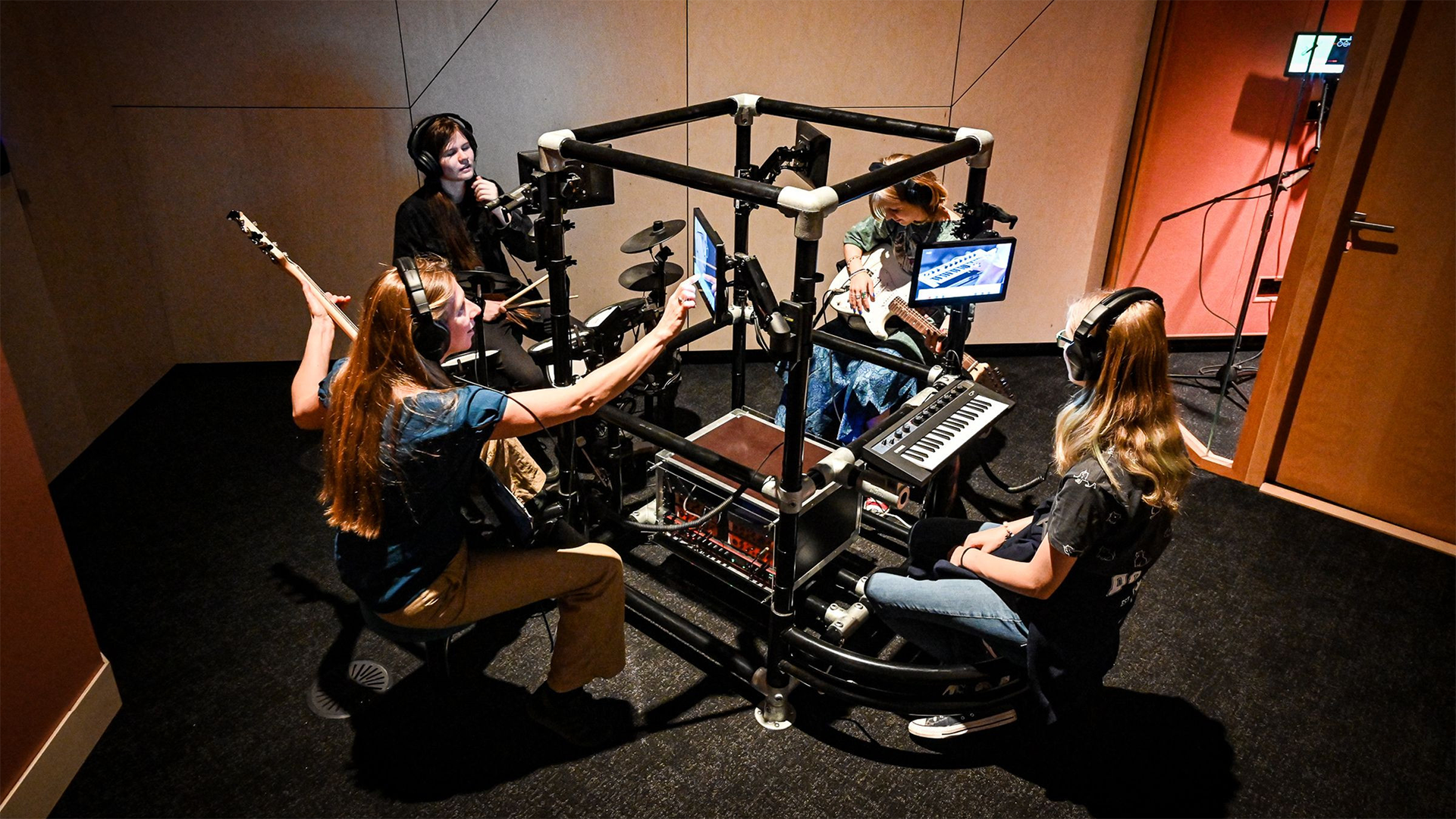
The showcased instruments include:
Microphone (for singing), Electric guitar, Bass guitar, Electronic drums and a Synthesizer.
